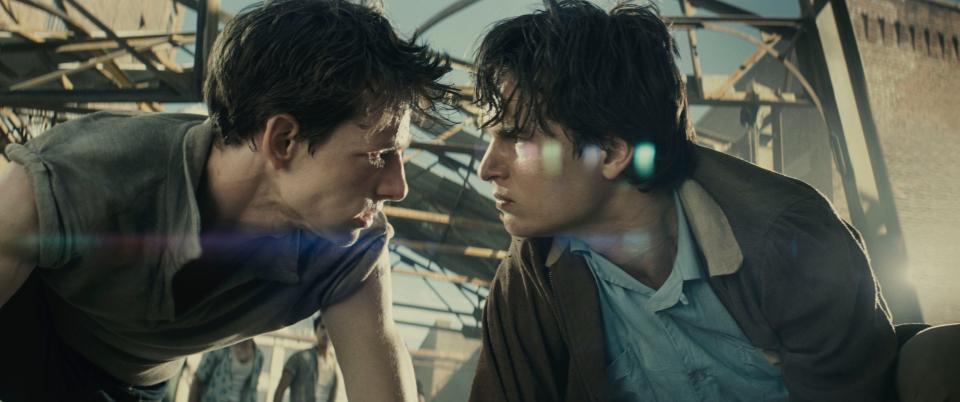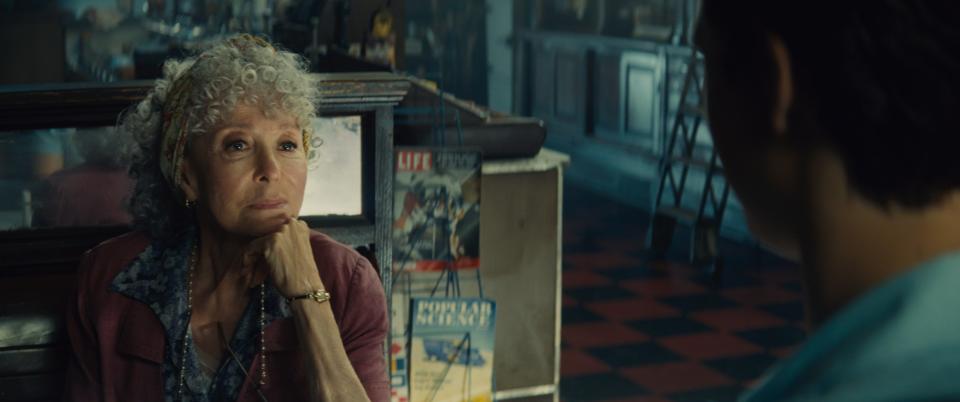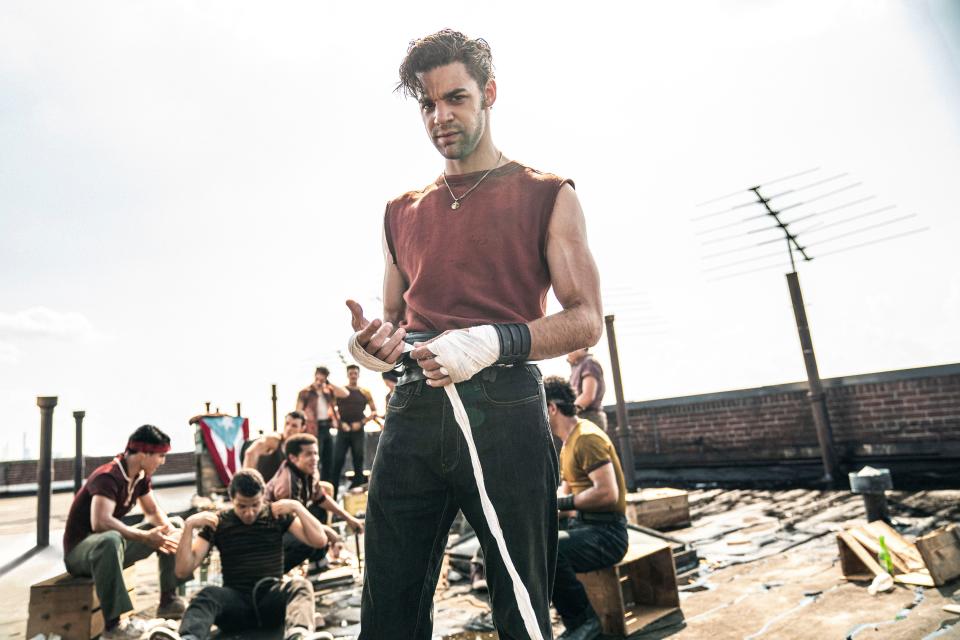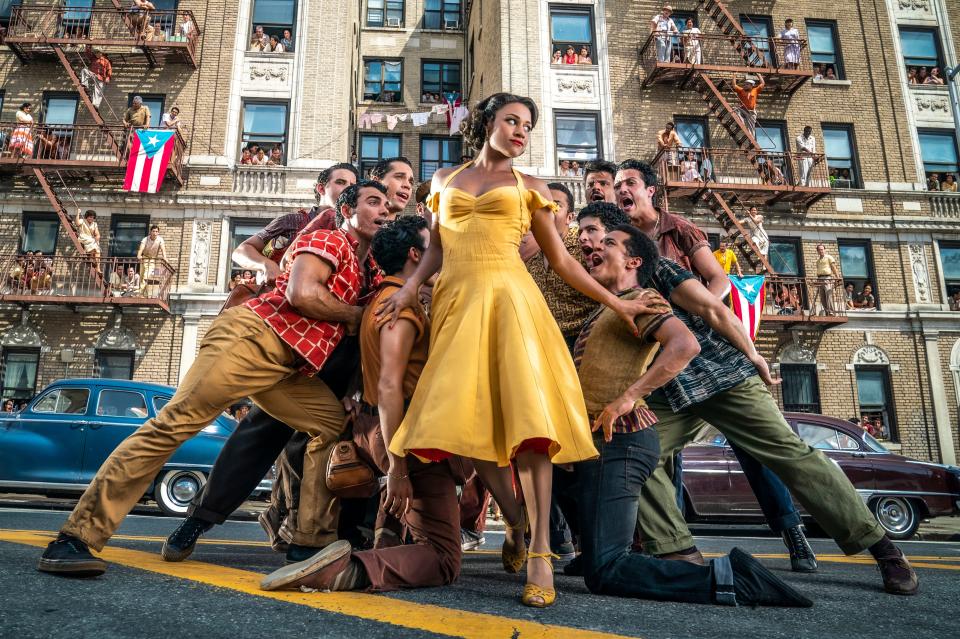All the biggest changes in Steven Spielberg's 'West Side Story' - including Rita Moreno's new role
- Oops!Something went wrong.Please try again later.
- Oops!Something went wrong.Please try again later.
- Oops!Something went wrong.Please try again later.
- Oops!Something went wrong.Please try again later.
- Oops!Something went wrong.Please try again later.
- Oops!Something went wrong.Please try again later.
Picture this: a 10-year-old Steven Spielberg belting out “Gee, Officer Krupke” at the dinner table.
His parents had bought the cast album of the original 1957 Broadway musical “West Side Story,” but it was young Spielberg who became obsessed with it – enough that, while not exactly a juvenile delinquent like members of Jets, he did get into a spot of trouble.
“I started singing, ‘My father is a bastard, my ma’s an S.O.B, my grandpa's always plastered, my grandma pushes tea,’" Spielberg recalls. “And my mom and dad are freaking out: ‘You can't say S.O.B. at the dinner table! Who taught you the word 'bastard?' You can't use that word.’ And I said, ‘Well, you did. You gave me the record!’”
Review: Steven Spielberg doesn't disappoint with his vibrant, revamped 'West Side Story'

Memorizing the songs of Leonard Bernstein and Stephen Sondheim ignited a lifelong passion that Spielberg has now put on screen, marking the first musical in his legendary career. This new “West Side Story” (now streaming on Disney+ and HBO Max), set in 1957 and starring Ansel Elgort and Rachel Zegler as young lovers on opposite sides of a gang war, is an expression of “everything I've always wanted to say about something that I've loved since I was a child,” Spielberg says.
And when it comes to the revisions in Spielberg's revamp, Sondheim's lyrics ring true: Something's coming, something good. Rita Moreno, who played Anita in the 1961 film (which won 10 Oscars, including best picture and supporting actress for Moreno), sees a “sociological awareness” among the "huge and profound" differences in Spielberg and writer Tony Kushner’s update. The original “was more song and dance and beautiful, extraordinary music. Here you have that plus all this other amazing stuff.”
Spielberg and his cast break down the biggest changes in the new “West Side Story”:

There’s now a historical reason for the Jets and Sharks to rumble
“West Side Story” has always been about race, as discontent between the rival gangs – the white Jets and Latino Sharks – lead to fights over turf and ultimately, tragedy. Spielberg grounds their beef by bringing in a concrete piece of the past: New York City's '50s-era slum-clearance projects act as a backdrop to the youngsters’ ill will toward each other. The director works in real details of Puerto Ricans evicted from the San Juan Hill neighborhood as “the excuse to build the Lincoln Center for the Performing Arts,” he says, with the Jets also being ejected: "Both gangs were living under the shadow of the wrecking ball.”
'The best there ever was': Jake Gyllenhaal, Barbra Streisand, more react to Stephen Sondheim's death

Tony gets a backstory, Maria is 'more mature'
In Spielberg's take, Tony (Elgort) understands the consequences of violence more than anyone: He's just been released after a year doing time for a violent incident when he was a member of the Jets. “They've all been down hard roads, but he's been to prison,” Spielberg says. Similarly, Kushner’s screenplay fleshes out many roles in complex fashion: For example, Sharks leader Bernardo (David Alvarez) yearns to be a prize fighter, while his sister Maria (Zegler) is “more mature, not such an angelic and virginal Juliet,” the director adds. Moreno reports Kushner gave every actor, including dancers, a backstory for their screen persona: “Pages of where they come from, who they are, how they feel about all kinds of things."
'There's no one way to be Latina': Rachel Zegler does stardom her way with 'West Side Story'

Rita Moreno adds a new role to the ‘West Side’ canon
After playing the fiery Anita in the '61 film, Moreno is drugstore owner Valentina in the new version, a revamped take on the Doc character from the original, who acts as Tony’s boss, landlord and close confidante. Moreno likes that her character is warm but with a “delicious” sense of humor. “I told Steven: ‘Most people see that other Rita who's funny and raucous. You mined the part of me that is very still, that is thoughtful and thinks a great deal. You have given me the chance to be that person when nobody ever does.’"
'I'm not that color': Rita Moreno pushed back against dark makeup in original 'West Side Story'

Tony and Maria change up their wedding vows
The musical historically had its romantic leads singing to each other while hiding their romance, be it late night on fire escapes or after hours at Maria's work. In the new film, though, Tony and Maria finally go on a proper date, hopping on a subway train for a museum visit. That ride also serves a place where each voices their concerns about potential violence between their factions, though Maria stands up for her community when Tony asks her to come to the Jets’ defense. “My favorite line in that scene is when she just looks at him and says, ‘Do you think it's easier for us?’ It’s this acknowledgement of the difference between the two of them,” Zegler says.
And once they get to their destination, Spielberg tweaks the famous "One Hand, One Heart" scene where Tony and Maria exchange wedding vows. “I never quite bought the vows as an idea that spontaneously just seems to happen,” he says. “I wanted Maria to be the one to do it, only in Spanish, to the point that Tony is slow in understanding what she's actually saying. And when he finally understands it, he chokes a bit and wonders, ‘Do I play this game or are we getting serious here?’"

The Puerto Rican community garners new authenticity
Gone are the days of the ’61 film, where white actors (including Natalie Wood, the original Maria) played Hispanic characters and Puerto Rican native Moreno had to wear makeup to darken her skin. The new movie brings respect and focus on the Sharks and their community – all played by Latino actors – as working toward the American dream.
Ariana DeBose, the Afro-Latina actress who plays Spielberg's Anita, appreciates how the Puerto Ricans speak Spanish to each other (and without English subtitles) in the new "West Side Story." “It’s so nice to see a film that does not ‘other’ the language,” DeBose says. “In American society, we're like, ‘Well, English is our first language and everything else is secondary,’ when the reality is that it's actually not true in today's world.”

‘America’ comes down from the rooftop and into the streets
In the original, Anita and Bernardo sing about their opposite feelings about moving to the U.S. on top of their Manhattan apartment building at night. In his version, Spielberg wanted to open up the boisterous musical number “America” to the larger community on the city streets in the daylight and “let that be an anthem for everyone who either loves it here or hates it here.”
It was great for DeBose, the lead performer in the song, for multiple reasons. “I’m afraid of heights, so I'm really glad we weren't shooting on a rooftop,” she says with a laugh. “At the end of the day, we are a varied community with lots of different lived experiences and opinions in the context of the number, but there is no lack of Latino joy. And that is such a lovely departure from how we are depicted in the entertainment industry sometimes.”
Contributing: Patrick Ryan
This article originally appeared on USA TODAY: New 'West Side Story': Steven Spielberg's biggest changes with musical

